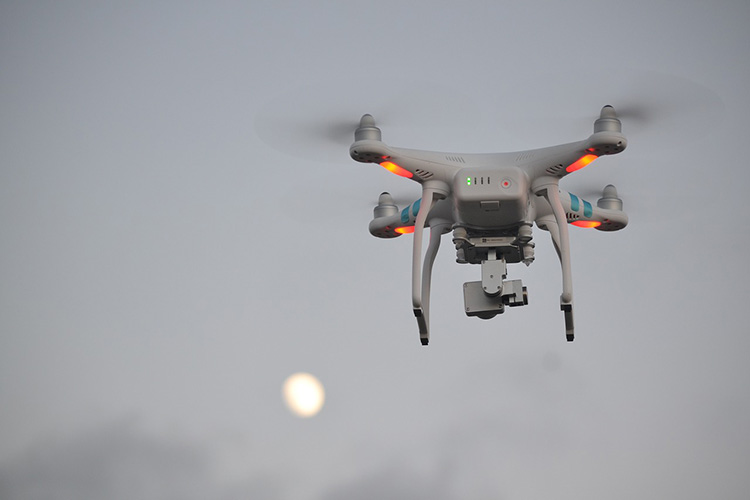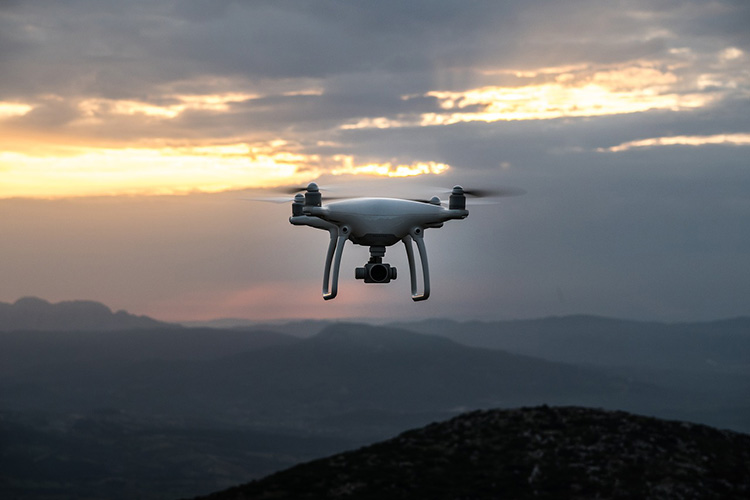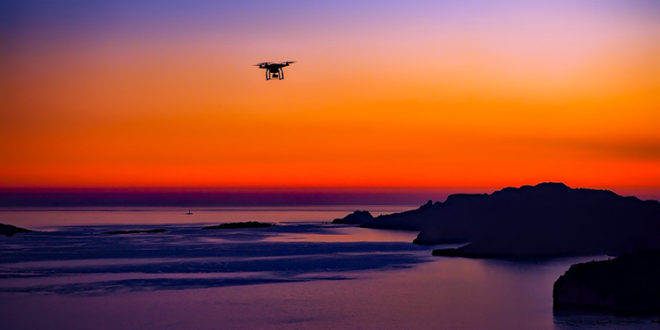In anticipation of our webinar tomorrow with Real Tour Vision entitled The State of Drone Regulations & Real Estate Marketing in 2017 we’re publishing a brief collection of articles that can look at how far we’ve are available the drone trade over the final yr, and the place we’re going subsequent.
Today’s publish will look ahead at the future of drone rules and the trade, with a detailed look at some current developments.
Image supply
We’ll publish the third and last article on this collection subsequent week, which can tackle questions that come up throughout the webinar and look at real-life situations business pilots in actual property and different sectors face every day in terms of rules and different elements of working a business drone operation.
Sign up for the free webinar now: The State of Drone Regulations & Real Estate Marketing in 2017.
The Future of Drone Regulations
Right now the drone trade, and drone rules, are at an inflection level right here in the United States.
On the one hand, we’ve got productive partnerships going down between the FAA and personal corporations in the type of the Pathfinder Program’s initiatives and the LAANC, in addition to NASA’s partnerships with corporations to create a viable Unmanned Traffic Management (UTM) system. Over 220 drone pilots are receiving licenses each single day on common, and drone purposes are rising like loopy throughout varied sectors, from building to actual property to agriculture, and way more.
The rules we’ve got in place work significantly better than the ones we had a yr in the past (assume 333 exemptions vs. Part 107—there’s simply no comparability). And these issues which are nonetheless sluggish and clunky, like the course of to request a waiver or airspace authorization, are being improved, with actual, concrete progress being made.
But on the different hand—and for this reason we’re at inflection level—we’ve got payments like Senator Feinstein’s Drone Federalism Act being proposed, which might put drone rules in the arms of particular person states, coupled with the findings of a current examine from Bard College’s Center for the Drone, which discovered a number of state legal guidelines that might jail you for federally permissible flights.
In addition, President Trump not too long ago proposed privatizing the Air Traffic Control system, which may impression FAA partnerships with non-public corporations engaged on UTMs for the ATC, however may additionally quick observe the course of for making drone deliveries and automating airspace authorizations.
Finally, the FAA reauthorization invoice is up for a vote in September, which is essential to figuring out whether or not the FAA will proceed at all (although certainly it’ll, in some type—however the vote is bound to fire up some loud voices in each pro- and anti-drone factions, in addition to different arguments about the ATC and associated matters).
In reality, the final 30 days have seen such a flurry of exercise round the FAA and drone rules that Christopher Korody of the Drone Business Center not too long ago wrote an in-depth article known as 7 Forces Transforming the FAA and the UAV Industry about the specific second wherein we discover ourselves, and the way all of this would possibly form the future of drone rules.
Let’s take a more in-depth look.
The Future We’d Like to See
Last week we wrote about the progress the FAA has made this yr in its partnerships with non-public corporations, by means of each the Pathfinder Program and the newly shaped Low Altitude Authorization and Notification Capability (LAANC) system.
One of the objectives of the LAANC is the automation of granting airspace authorization to business drone operators looking for to fly in managed airspace.

Image supply
The current launch of airspace authorization maps represents a major step towards reaching this aim, since UAV pilots can now use these maps to get fast perception into the standards that will probably be used when figuring out their authorization request. The implementation of this automation is seen as a precursor to a UTM system that NASA is growing, with plans at hand it to the FAA by 2019.
In addition, the FAA has been working for years by means of its Pathfinder Program on researching situations the place flights may be made which are at the moment prohibited below Part 107. Recently we’ve seen the FAA approve some Beyond Visual Line of Sight (BLVOS) flights, in addition to flights over folks.
None of these permissions have been made on a everlasting foundation (as they’ve been in another nations, like Denmark and Switzerland) however the incontrovertible fact that they’re being granted at all represents a step ahead.
Given all of the above, we’d like to see a regulatory future in the U.S. the place UAV pilots can robotically apply for and get airspace authorization; wherein drones flights in managed airspace are managed by UTMs, preserving skies protected for passengers on airplanes; and wherein the course of to acquire waivers for BVLOS, flying over folks, and night time flights is automated, or at least streamlined.
These regulatory enhancements would allow business pilots to run their operations predictably, realizing when and the place they’ll anticipate to fly. People would really feel safer about the freedom business pilots should function in managed airspace and in conditions which are at the moment prohibited, as a result of UTMs would guarantee protected operation close to airports, and keep away from the nightmare state of affairs of a rogue drone taking down an airplane (maliciously or unintentionally).
The Other Side of the Coin
Government applications at the moment in place make the future detailed above potential to think about, however there have been so much of developments not too long ago that make it look like issues may change, and all of the sudden.
In one state of affairs, Feinstein’s Drone Federalism Act passes, and we see a regression to what FAA Administrator Michael Huerta has known as a patchwork system for rules. In this state of affairs every state, and even every metropolis or county, has its personal particular person UAV rules, making it virtually inconceivable for business operators to know easy methods to be compliant, and probably killing the risk of being a person business operator fully.

Image supply
There are a quantity of different developments which have occurred not too long ago, which may result in drastic (and probably unfavorable) modifications in the UAV regulatory scene:
- The final result of John Taylor’s lawsuit was that hobbyists now not should register their drones. This may result in openings for brand spanking new rules to be pushed ahead, or may result in extra reckless flying (which may in flip result in new, anti-drone legal guidelines).
- The 2017 FAA Reauthorization Bill may current some sudden wrinkles, since privatizing the ATC could also be at odds with reauthorizing the FAA. The invoice will probably be up for a vote in September, which is correct round the nook.
- Privatization of the ATC may quick observe the creation of a UTM for the complete nation, and result in a greater regulatory scene for drones—or it may result in excessive charges and low outputs, with much more delays.
- The proposed Drone Security Bill would give the authorities the means to trace, seize management of, and destroy any UAV it determines could pose a safety menace. This invoice will surely restrict, or encroach upon, the FAA’s present authority, particularly as a result of safety threats could possibly be interpreted as extending to flights over the pure sources held by non-public corporations.
The Reality
The actuality is that this can be a time full of change and uncertainty in terms of the FAA and drone rules, and it’s laborious to say what’s going to occur subsequent.
When you learn the listing of bulleted objects above, it appears to be like like the FAA could have its authority chipped away from all sides.
But none of that is prone to occur straight away. Even pushing ahead the privatization of the ATC is not going to get rid of the want for the FAA, and any modifications that occur look like they’ll probably be sluggish and incremental.
Don’t neglect to enroll in our webinar tomorrow with Real Tour Vision: The State of Drone Regulations & Real Estate Marketing in 2017.
 Unmanned Aerial Vehicle The latest drone news
Unmanned Aerial Vehicle The latest drone news




